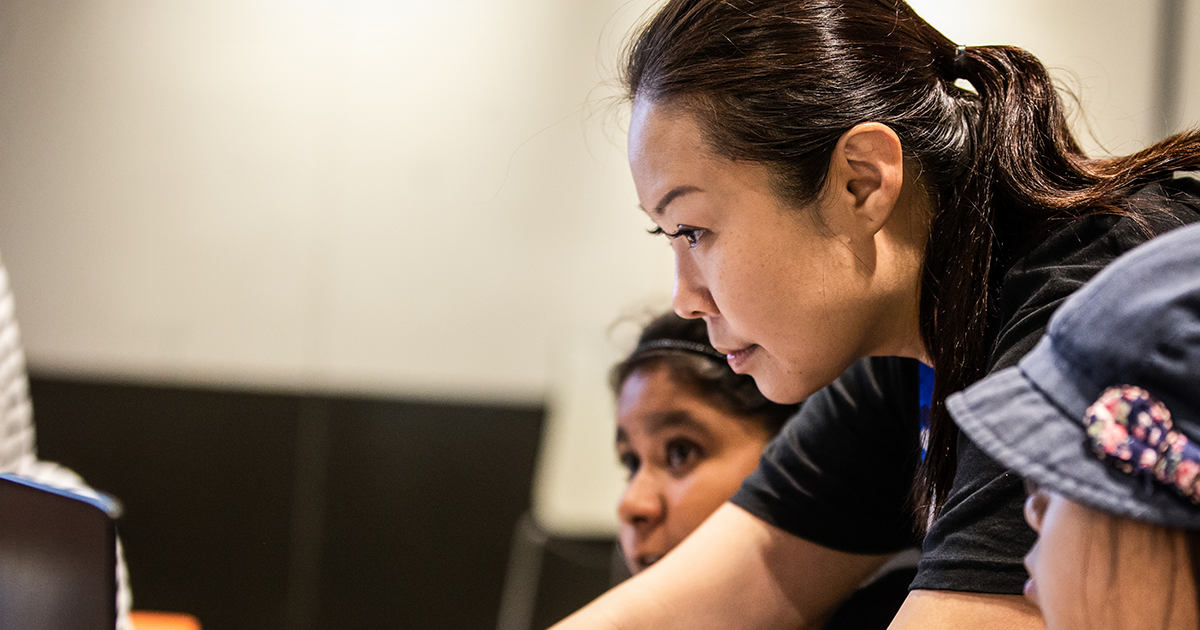Welcoming and retaining diversity in cybersecurity

I doubt I’d be in the role I am now if leaders at one of my first jobs hadn’t taken an interest in my career. Although I taught myself to code when I was young, I graduated from college with a degree in English Literature and began my post-college career in editorial. I worked my way up to Assistant Editor at a math and science college textbook publisher located in Boston, Massachusetts. I was responsible for acquisitions and training on the software that that the company distributed with its textbooks. The senior editors sent me to a conference in Florida to train the sales team on how to present the software to professors. This is where I met Jennifer. Jennifer headed up the network and IT support for our California parent company, and because we shared a room at the conference hotel, we got to know each other, and she saw me present. This interaction proved pivotal. When the publisher created a new position to support a network of AS/400s, Jennifer talked me into applying—and yes, she did have to talk me into it! Like a lot of young professionals, I was intimidated to take on such a different role. But I’m so glad she was looking out for me. It was the start of my career in technology, which ultimately led me to Microsoft.
My experience is a great example of how individuals and company culture can influence the trajectory of someone’s career. To celebrate Women in Cybersecurity month, Microsoft is exploring tactics to increase diversity in the tech industry. In the first post in the series, Ann Johnson wrote about mentorship. In this post, I share some ideas for cultivating the diverse talent that already work at your company to build a strong and diverse leadership team.
Retention is as important as recruitment
When we talk about the lack of diversity in tech, much of the conversation focuses around hiring. And it’s true that we need to dramatically increase the number of women, non-binary, and people of color that we recruit. But if we want to create more diverse technology teams, we also need to address the talent drain. Too often smart technologists with nontraditional backgrounds drop out of STEM careers. Studies have shown that up to 52 percent of women leave technology fields. This is nearly double the percentage of men who quit tech. And for those who think it’s because women don’t enjoy technology, 80+ percent of women in STEM say they love their work. The problem often comes down to culture. Which means it’s something we can fix! I’ve worked with and managed many neuro-diverse teams and here’s what I’ve seen work.
People aren’t books
One of the most famous pictures of Einstein shows him with his hair in disarray, sticking his tongue out. If you didn’t know he was one of the greatest thinkers in the world, you might assume he wasn’t the fastest electron in the universe. Or what does it say that many of us didn’t discover Katharine Johnson, another brilliant physicist, until 2017 when the movie “Hidden Figures” was released.
Our collective mental model for what an engineer or scientist is supposed to look and act like doesn’t reflect reality. Some people have purple hair, some like to work in yoga pants, some listen to loud music on headphones all day, or have creative face tattoos. And many are women or LGBTQ or people of color or disabled. People’s race, gender, appearance and work styles have no bearing on whether they are a hard worker or a valuable contributor. We know this, but often we don’t realize we’ve made a judgement based on unconscious biases.
How to address: Don’t judge people by their “covers.” This starts by acknowledging that your biases may not be explicit or intentional, but they still exist. Listen to what people say. Evaluate the work they produce. Observe how they collaborate with others. These are the indicators of the value they bring. And keep in mind that people who’ve been conditioned to believe that technology isn’t for them, may not exhibit the level of confidence you expect. It doesn’t mean they can’t do it. They may just need a little more encouragement (thank you, Jennifer!).
Women often leave jobs because they feel stalled in their careers. In one study, 27 percent of U.S. women said they feel stalled and 32 percent were considering quitting in the next year. For a variety of reasons, unconscious bias results in straight white men getting more opportunities on high profile projects, more ideas greenlit, and faster promotions. As a result, women get discouraged, do not feel supported and look for other opportunities. That is why in the previous blog, we focused on mentorship.
How to address: Be a champion for women and other underrepresented groups in your company. My relationship with Jennifer is a great example of this. She took an interest in my career, identified an opportunity and helped me get to the next rung. Our relationship was informal, but you can also create a structured sponsorship program. The goal is to go beyond mentorship and become an advocate for promising women, people of color, and other underrepresented groups. Use your influence to get them the right projects, the right advice, and the right exposure to help them advance their careers.
Nurture unique thinkers
Back when I was a manager at KPMG, we used to try to hire people who “think outside the box.” But the tricky part about hiring out of the box thinkers is that their ideas are, well, outside the box. Organizations often think they want people to shake things up but in practice many are uncomfortable being challenged. This leads them to quickly shut down bold new ideas. When original thinkers don’t feel valued, they take all that innovation and creativity elsewhere.
How to address: Build a culture of inclusion where everyone has a chance to share. Not every idea is great; in my career I’ve had more than my share of bad ones! But you should listen to and consider all opinions—even if they seem a little off the wall. It doesn’t mean you have to move them all forward, but sometimes an idea that sounds outlandish one day starts to make sense after a good night’s sleep. Or take a page from the women in the Obama administration and amplify ideas that have been overlooked.
Respect the hours
Not everyone can commit to a regular eight in the morning to six in the evening work week. Many people care for children, sick spouses, and elderly parents—being a caretaker is a skill in and of itself! In fact, this quality of being a caretaker is something that in most technology roles can be a valued asset. In addition to being a caretaker, others can’t work “regular” weeks because they’re finishing degrees or have other time challenges and commitments.
Varied approaches to time also apply to project milestones. People deal with deadlines differently—some get stressed if the deadline is too close (like me!) and do their work in advance, others need that adrenaline pump and wait until (almost) the last minute to deliver.
How to address: Institute and support flexible work hours, job sharing (two people share the same job, both doing it half-time), or three weeks on/one week off work schedules that enable people to contribute without requiring them to keep the same hours as everyone else. Trust that people can be productive even if they don’t work the same way or at the same time as your typical employee.
To build a diverse, experienced team of leaders, you need an environment that supports and accepts differences of all kinds. Don’t let bias about gender, appearance, or the hours someone can work get in the way of nurturing all those great hires into the next generation of great leaders. Our senior director for our cybersecurity operations team, Kristina, looks for diversity as this helps with managing the diversity of threats. Listen to her thoughts on diversity in our CISO Spotlight Episode 7.
What’s next
For those interested in how to find more diverse talent, next week Theresa Payton will share ideas from her experience recruiting girls, women, and other people with differing backgrounds into technology.
In the meantime, bookmark the Security blog to keep up with our expert coverage on security matters. Also, follow us at @MSFTSecurity for the latest news and updates on cybersecurity. To learn more about our Security solutions visit our website. Or reach out to me on LinkedIn or Twitter.
READ MORE HERE



